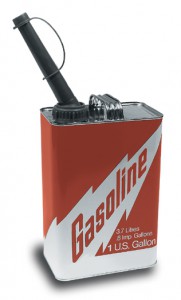One year ago today, Do the Math was born with a post on the absurdity of continued growth—in this case illustrating a Galaxy-consuming civilization in a mere 2500 years. Within a month, the site was getting thousands of pageviews per day, as I cranked out a backlog of thoughts and analysis surrounding the energy challenges we face.
In the process, adhering to a weekly schedule forced me to perform many new calculations on topics I had not previously explored very deeply. So besides being a cathartic experience, I gained new understanding, finding the exercise of constructing the alternative energy matrix to be particularly clarifying. One of the major lessons for me has been that while the physical scale of any alternative energy resource is important—and sometimes a showstopper—more often it’s the practical limitations that form the biggest barriers.
Finding the time and (mental) energy to keep the blog rolling has been challenging, but it’s you folks who inspired me to keep trucking. Knowing that each post would be read by thousands, and knowing that I could look forward to some excellent and thought-provoking (although sometimes just provoking) comments made the enterprise worthwhile.
At this point, I have dropped the cadence to bi-weekly, and my list of future topic ideas is slowly being whittled down. Many comments in the past have requested that I write a post about issue or another. I invite you to submit requests (even if repeated) in the comment forum below. Note that I might not have the background, interest, or time to invest if serious analysis is required. But there is some chance I’ll take the bait—and the idea may already even be on my list! Please refer to the Guide to Posts for a refresher of what’s been covered already.
Also, I think it fitting on this first anniversary to extend a note of gratitude to Asher Miller of the Post Carbon Institute for inspiring me to start writing, and for putting me in touch with the fine folks at the Energy Bulletin. The EB editors: Bart Anderson, Kristin Sponsler, and Simone Osborn offered early guidance and good advice (plus instant readership) that was vital to getting Do the Math off the ground. So a hearty thanks to these folks! 1.5 million pageviews later, their contributions have clearly had an impact.
And thanks to you, the readers, for your role in making this a successful and rewarding endeavor.
Views: 1377








